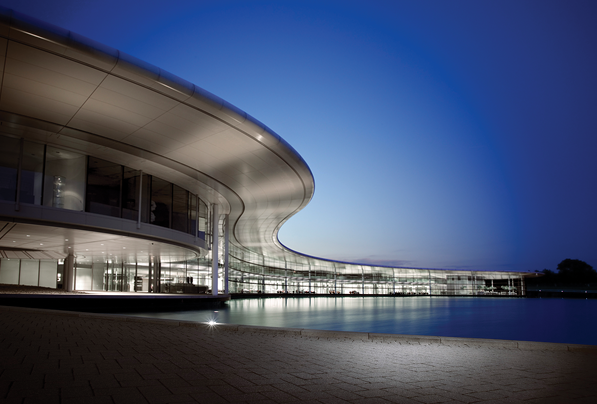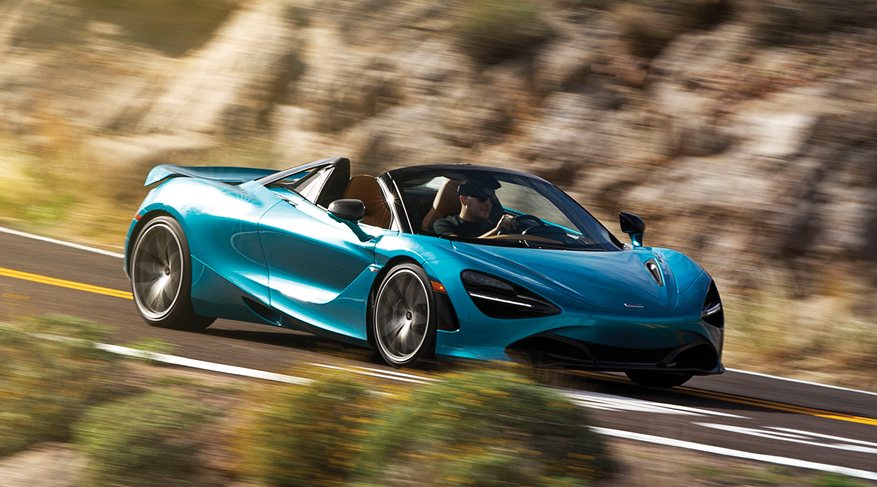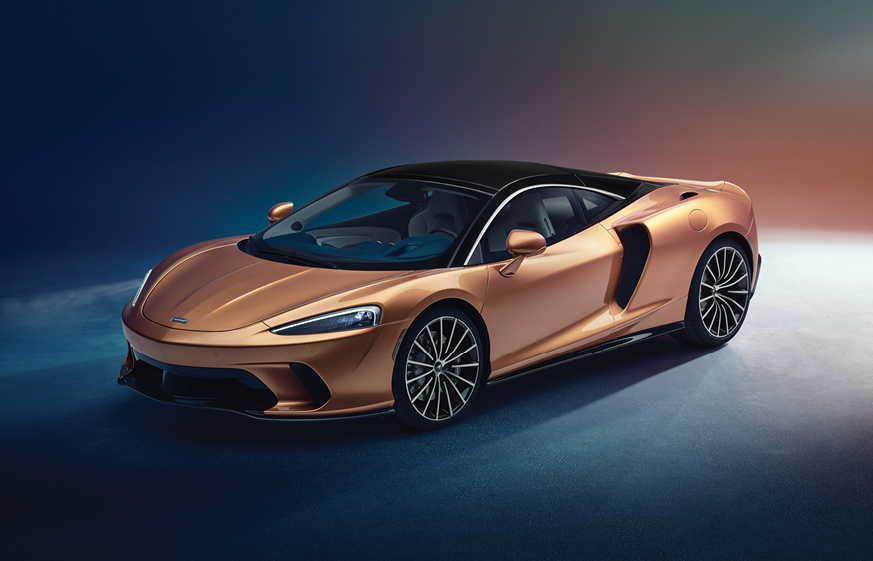- Home
- Media Kit
- Current Issue
- Past Issues
- Ad Specs-Submission
- Ad Print Settings
- Reprints (PDF)
- Photo Specifications (PDF)
- Contact Us

![]()
ONLINE


Mike Flewitt, Chief Executive Officer, McLaren Automotive
Built to Win
Editors’ Note
Mike Flewitt joined McLaren Automotive as Chief Operating Officer in June 2012 and became Chief Executive Officer in July 2013. Prior to joining McLaren, he was Vice President, Manufacturing, Ford of Europe, and Corporate Officer, Ford Motor Company. Before joining Ford, Flewitt held senior manufacturing and operations roles at TWR Group Limited, AutoNova AB, Rolls-Royce Motor Cars and Bentley Motors. He qualified in Manufacturing and Mechanical Engineering and completed a post-graduate qualification in Management and Project Management at the University of Salford.
Company Brief
McLaren Group (mclaren.com) is globally-renowned as one of the world’s most illustrious high-technology brands. Since the formation of McLaren Racing in 1963, McLaren has been pioneering and innovating in the competitive world of Formula 1, forging a formidable reputation which has seen the racing team win 20 World Championships and over 180 races. The Group has built on its successful racing expertise and diversified to include a global, high-performance sportscar and supercar business, McLaren Automotive, and a game-changing technology and innovation business, McLaren Applied Technologies. McLaren Automotive is now the largest part of the combined Group and currently accounts for 85 percent of Group turnover and counts North America as its largest market.

McLaren Technology Centre, Woking, England
Will you highlight the history of McLaren and how the brand has evolved?
It is a really interesting history and a little different than many other companies. We were founded by Bruce McLaren in 1963. Bruce was a New Zealand race-car designer, driver, engineer and inventor. He did work for a U.K. company called Cooper, which was John Cooper’s company, and was successful with them. He set up McLaren Racing in 1963 and developed it all the way through to 1970 when he tragically died testing one of our cars at just the age of 32. What was unique about Bruce was that he was the leading engineer in the company, he was the leading driver and won Formula One races and Can-Am races, and he was an entrepreneur. If you put that in today’s context – chief engineer, chief racing driver, and chief businessman – these are three different jobs, but Bruce did all of them which is unique.
The company progressed through the 1970s in Can-Am, in IndyCar and in Formula One, winning a few Indy 500s and a few Formula 1 championships with people like James Hunt and Emerson Fittipaldi. It was building its reputation and then Ron Dennis came along in 1980 and took over the reins of the business and ran the business for 37 years, making McLaren one of the most successful teams ever in Formula One. That really built the reputation of the brand. Along the way, we built and grew the automotive company that we have now and sold our first car in June 2011.
McLaren today is a very powerful brand which is about motorsport, racing and driving. Our cars are supercars and people love supercars for all kinds of reasons, but what differentiates us and is our defining attribute is the way that the car drives.
What is the target market for McLaren?
It is a niche market if you take it in the broadest possible sense. In 2018 there were 94 million cars sold in the world. Out of those 94 million, 4,800 were McLarens, so clearly our cars are for a niche market. Having said that, we’re now a significant player in the segment we’re in, in the supercar segment. In many markets we’re outselling Lamborghini and Aston Martin. There are even markets where we outsold Ferrari, albeit not in total volume globally.
We are also expanding into the GT (Grand Tourer) segment in the fall this year with the new McLaren GT, but only in a way that is true to our DNA of lightweight performance.
McLaren is a true competitor now in our segment and I think when you look for who the McLaren customer is, I would say in many ways we are an enthusiast brand. Our customers tend to be well informed and are people who fundamentally love driving and love motorsports and have bought into the McLaren brand. Our customers also love technology because one of the things that enables our cars to be leaders in their driving dynamics is the technology we put into the cars.
How critical is technology to the strength and success of McLaren?
Technology is a key differentiator for McLaren and we use technology where it gives us a performance advantage. We invest in technology and then we develop it, such as lightweight carbon structures and all of our cars, race or road, have been built with lightweight carbon structures. This gives you a much stiffer structure, and a stiffer structure enables things like the powertrain and chassis systems that hang off that structure to perform more consistently. They are also lighter, and a lighter car is a car that’s more agile and more nimble. We are using and investing in technology to give us attributes that bring real benefits to the driver. Technology underpins our Track25 business plan and we’ll achieve 100 percent hybridization of our sportscars and supercars by 2025 which goes hand-in-hand with our focus on lightweight to achieve the performance characteristics that our customers expect of a McLaren.
When we design our cars, they’re very authentically designed. The features you see on the car are there because they enable performance, not because it looks cool. These are important principles. If you have those from day one when you start defining the car, it shapes what the car becomes, and rather than designing a car for the look and appeal, it is being created for performance and you end up with a very authentic product.

McLaren 720S Spider in belize blue
Will you highlight McLaren’s partnerships and collaborations with other leading global brands?
These relationships are very important and add real value. An example is Pirelli who supplies all of the tires that we have on our road and race cars. They’re a partner in the development of those tires and we fit those tires as standard equipment when we sell the car. We also fit them to our race cars out in the series. They’re absolutely critical to what we do, and it isn’t just a brand relationship. It’s a product/technology relationship.
Another important partnership would be with Bowers & Wilkins who provide the entertainment systems in our cars. They work with us on the development of the audio equipment and we have a pretty big piece of audio equipment in the engine. They work on developing that with us, so they are our partner in the development of the car. We also sell licensed products with them based on our deep relationship such as putting the McLaren name on a set of headphones.
We partner with Richard Mille, a leading watch brand and we have a lot of commonality with that brand. We’ve done work together on developing lightweight materials that Richard has used in his watches. We have a common customer base. Richard sells around 5,000 watches a year and we sell about 5,000 cars a year. We sell broadly into the same demographic and into the same geographic distribution. We also do a lot of events together.
What matters to us for any partnership or collaboration that we enter is that it is an authentic relationship. We have to believe in the partnership.
How critical has it been to build the McLaren team and will you discuss your focus on attracting and retaining talent?
This is a huge challenge because in automotive terms we’re quite a small company. We have fewer than 3,000 people. However, despite being a relatively small company and an independent company, we are competing globally with incredibly well-resourced competitors. Our strength has to be the quality of the people we have, the leadership, and the direction that we give that team so that we’re really harnessing all our resources for the best result.
I think we have an absolutely outstanding international team. We have teams apart from the teams here at the head office who are doing engineering, design, development and manufacturing. We have a team in the U.S. that looks after the North American market; we have a team in Bahrain for the Middle East; we have teams in Singapore, Shanghai and Tokyo for Asia, all committed to helping us understand the local markets and giving us a local focus and feel in each market.
I look at my priorities and my role in three parts. One is managing internal operations, giving direction to the team who are designing, engineering and manufacturing the car. Then there is the external role, working with customers, working with retailers, and getting our marketing message across. This is critical since there is no point in building something if you are not building the demand. The other focus is working with our shareholders and our investors. While they are definitely proud of McLaren and its products, this is a business and it needs to be a successful business.

The new McLaren Grand Tourer
With the success that McLaren has achieved under your leadership, are you able to take moments to enjoy the wins and appreciate what you have accomplished?
We take time to do this, and one of the things you learn as you get older and spend more time in business is that you need to put aside the time to celebrate. We celebrate successes. We display awards. We need to make it a commitment to do this since we’re quite relentless and never satisfied.
We will always be relentless in driving performance, whether that’s business performance or the performance attributes of our cars. That may be because we came out of a motorsport company. We’re incredibly competitive.![]()